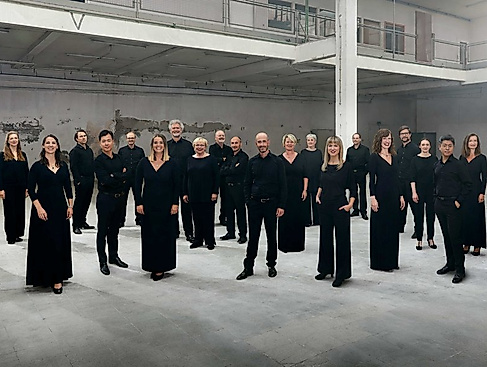
Altonaer Singakademie / Hamburger Camerata
- Concerts
Antonín Dvorák wrote his Mass in D major op. 86 for the consecration of a village castle chapel in 1887, so it can be seen as a kind of occasional composition, with the occasion acting as a most welcome trigger of ready forces. Sacred compositions had always played a role in Dvoák’s oeuvre, even if they seem to have taken a back seat to his symphonic works. Nevertheless, it was the Stabat Mater of 1877 that laid the foundation for the international reception of his music.
The Mass in D major is much more modestly conceived, in keeping with the village setting and the possibilities of the chapel. Nevertheless, even in the original organ version, Dvorák shows his full mastery. In the compositional simplicity, the proximity to classical music, especially to Schubert as a role model, can be felt at all times. At the same time, Dvoák succeeds in capturing the cheerful, carefree atmosphere of the lovely Bohemian countryside and the simplicity of a deeply religiously rooted country folk with his own folkloristic originality of melody.
Dvorák created the rarely performed orchestral version heard in this concerto in 1892, in which he remains very close to the original conception, but skilfully uses the possibilities of the orchestra to differentiate the dynamics more finely and realise a richer harmony.
The »Mass of the Children«, written by John Rutter in 2002 in memory of his son Christopher, who died at the age of 19, is much more than a mass with an obbligato children’s choir part. Rutter counterpoints the mass text of the Latin Missa brevis with poetic texts in English, including verses from the pen of Bishop Thomas Ken (1637–1711), who wrote them for the scholars of Winchester College. They set the Mass in the context of a daily routine, from waking (»Awake, my soul...«) to going to sleep (»Glory to thee, my God, this night...«) and are mainly sung by the children’s choir. In this way, Rutter focuses on the Mass text from a child’s perspective, while the large choir illuminates the adult perspective.
The »Mass of the Children« also sheds light on different musical perspectives. Coming from the English choral tradition himself, Rutter enriches his style in general and the Mass in particular with elements from jazz and pop by integrating them into a multi-layered harmony and rhythm. Rutter’s melodic inventiveness in the Kyrie may evoke musical associations for some, while the unusual rhythms in the Gloria are reminiscent of South American dances.
In Dona nobis, Rutter quotes a canon by Thomas Tallis (ca. 1505–1585) and thus draws a line back to his own musical roots.
PERFORMERS
Altonaer Singakademie choir
Neuer Knabenchor Hamburg choir
Jugendchor Voci.ssimo choir
Hamburger Camerata orchestra
Antonia Strieder soprano
Inka Stubbe alto
Andreas Preuß tenor
Sönke Tams Freier baritone
Christoph Westphal director
PROGRAM
Antonín Dvoák
Messe für Soli, Chor und Orgel D-Dur op. 86
John Rutter
Mass of the Children
No liability is assumed for the correctness of the data.










